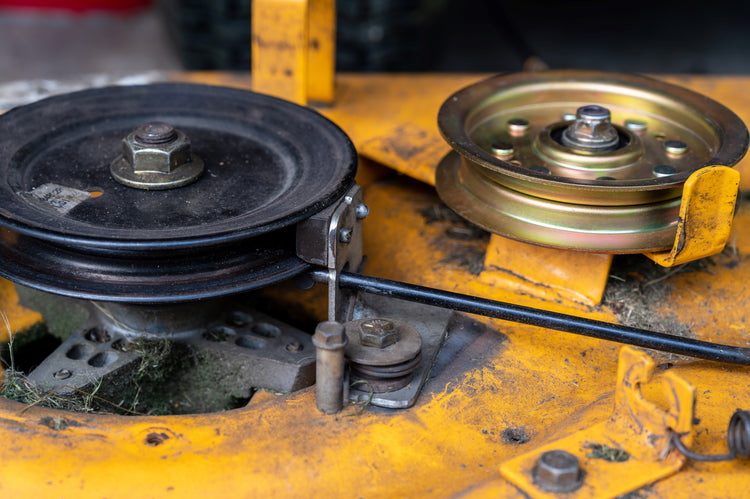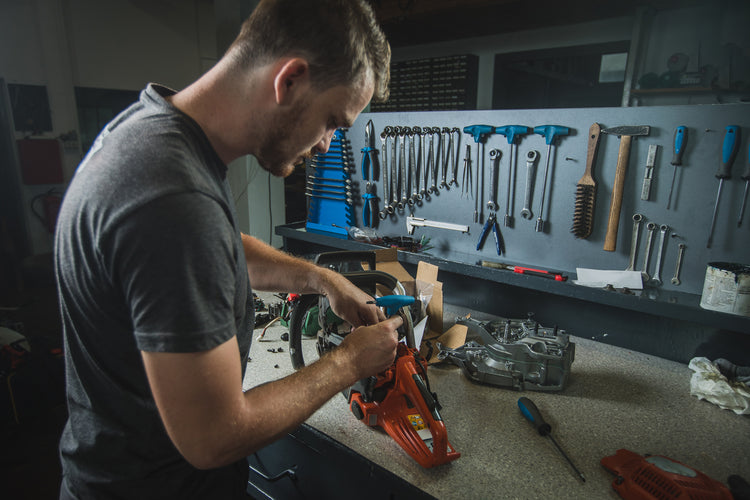Pulleys and idlers are important components of small engines such as lawn mowers, snow blowers, and generators. These mechanical devices are responsible for transferring power from the engine to other parts of the machine by means of drive belts or chains. Pulleys and idlers come in various types and designs, each with its specific functions and applications. In this article, we will discuss the different types of pulleys and idlers used in small engines, their functions, and maintenance tips.
What are Pulleys?
Pulleys are wheel-like devices that have a grooved rim or surface on which a belt or chain rides. They are typically made of steel, aluminum, or plastic and come in various sizes and designs. Bearings play a crucial role in these components, reducing friction and ensuring the consistent rotation of the pulleys and idlers. High-quality bearings, often made from corrosion-resistant materials, are vital for outdoor equipment as they provide enhanced durability and longer life in harsh environments. Tensioners help maintain the correct belt tension, preventing slippage and optimizing performance. By incorporating wear-resistant and weather resistant materials, these tensioners prolong the lifespan of the pulleys and idlers, ultimately improving the overall reliability and efficiency of the outdoor power equipment.
Pulleys are used to transmit power from one shaft to another, change the direction of motion, or multiply the force of an applied effort. For example, the engine pulley on a lawn mower transfers power from the engine to the cutting blade, while a belt pulley on a snow blower helps to change the direction of the auger.
Types of Pulleys
There are different types of pulleys used in small engines, each with their unique design and function. The following are the most common types of pulleys:
- Fixed Pulley - A fixed pulley is attached to a stationary object and does not move. It is used to change the direction of the applied force.
- Single Pulley - A single pulley has a single groove and is used to transmit power from one shaft to another.
- V-Groove Pulley - A V-groove pulley has a V-shaped groove that is used to guide V-belts. They are commonly used in engines with multiple belts.
- Gear Pulley - A gear pulley has teeth on its surface and is used to transmit power from one shaft to another.
- Locking Pulley - A locking pulley has a mechanism that locks the pulley to the shaft to prevent slipping.
What are Idler Pulleys?
Idler pulleys, also known as belt idler pulleys, are a type of pulley that do not transmit power but are used to maintain belt tension and alignment. They are typically located near the engine pulley and help to reduce belt wear and prevent slippage. Idler pulleys are usually smaller than engine pulleys and can be either flat or V-grooved.
Difference between Pulleys and Idler Pulleys
The main difference between pulleys and idler pulleys is that pulleys are used to transmit power, while idler pulleys are used to maintain belt tension and alignment. Pulleys come in different sizes and designs and can be either fixed or movable, while idler pulleys are usually smaller and have a flat or V-grooved surface.
Symptoms of a Failing Idler Pulley
When an idler pulley goes bad, it can cause various symptoms that can affect the performance of the engine. The following are some of the common symptoms of a failing idler pulley:
- Squeaking or Squealing Noise - A worn-out or damaged idler pulley can produce a high-pitched noise when the engine is running.
- Belt Slippage - A loose or worn-out idler pulley can cause the belt to slip or come off, resulting in reduced power or even engine failure.
- Vibration - An unbalanced or misaligned idler pulley can cause the engine to vibrate excessively, leading to increased wear and tear on other engine components.
How to Know if Your Pulley Needs Replacing
To know if your pulley needs replacing, you can perform a visual inspection or a physical test.
Visual Inspection: Check the pulley for any signs of wear, damage, or misalignment. Look for cracks, chips, or grooves on the pulley surface, as well as any signs of rust or corrosion. Check the pulley alignment with the belt and other pulleys to ensure that it is not causing any belt misalignment or excessive wear.
Physical Test: To test the pulley's condition, rotate it by hand and check for any roughness, wobbling, or resistance. A good pulley should rotate smoothly and evenly without any unusual noise or vibration. If you notice any of these symptoms, it is a sign that the pulley needs replacing.
How to Know if Your Lawn Mower Pulley is Bad
If you own a lawn mower, the most common pulley that may go bad is the engine pulley. Signs that your lawn mower pulley is bad include:
- Difficulty Starting - A worn-out engine pulley can cause difficulty starting the engine due to the reduced power transmission to the cutting blade.
- Reduced Power - A damaged engine pulley can cause reduced power output, resulting in poor cutting performance and slower mowing speed.
- Belt Slippage - A loose or damaged engine pulley can cause the belt to slip or come off, leading to reduced power and increased engine wear.
Best Way to Check an Idler Pulley
To check an idler pulley, you can perform the following steps:
- Inspect the pulley for any signs of wear, damage, or misalignment.
- Rotate the pulley by hand and check for any roughness, wobbling, or resistance.
- Check the belt tension and alignment to ensure that the idler pulley is maintaining proper tension.
- Listen for any unusual noise or vibration coming from the idler pulley.
If you notice any signs of wear, damage, or misalignment, it is recommended that you replace the idler pulley to prevent further damage to the engine and other components.
Can You Replace Your Own Pulley on Your Lawn Mower?
Yes, you can replace your own pulley on your lawn mower if you have the necessary tools and skills. To replace a pulley, you will need to:
- Disconnect the spark plug to prevent accidental engine start-up.
- Remove the belt from the pulley by releasing the tension or removing other pulleys as needed.
- Remove the old pulley by loosening the retaining bolts or screws.
- Install the new pulley by tightening the bolts or screws.
- Reinstall the belt and adjust the tension as needed.
- Reconnect the spark plug and test the mower to ensure proper operation.
It is important to follow the manufacturer's instructions and safety precautions when replacing a pulley to avoid injury and damage to the engine. If you are unsure about how to replace a pulley, it is recommended that you seek the help of a professional mechanic.
In conclusion
Pulleys and idlers are essential components of small engines that help to transfer power from the engine to other parts of the machine. Understanding the different types of pulleys and idlers and their functions can help you maintain and repair your unit more effectively. Regular maintenance, including visual inspections and physical tests, can help you identify and replace worn-out or damaged pulleys and idlers before they cause more significant problems.



